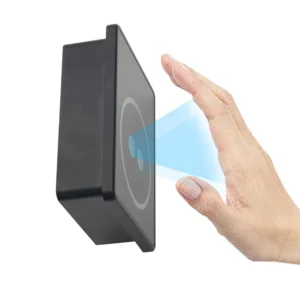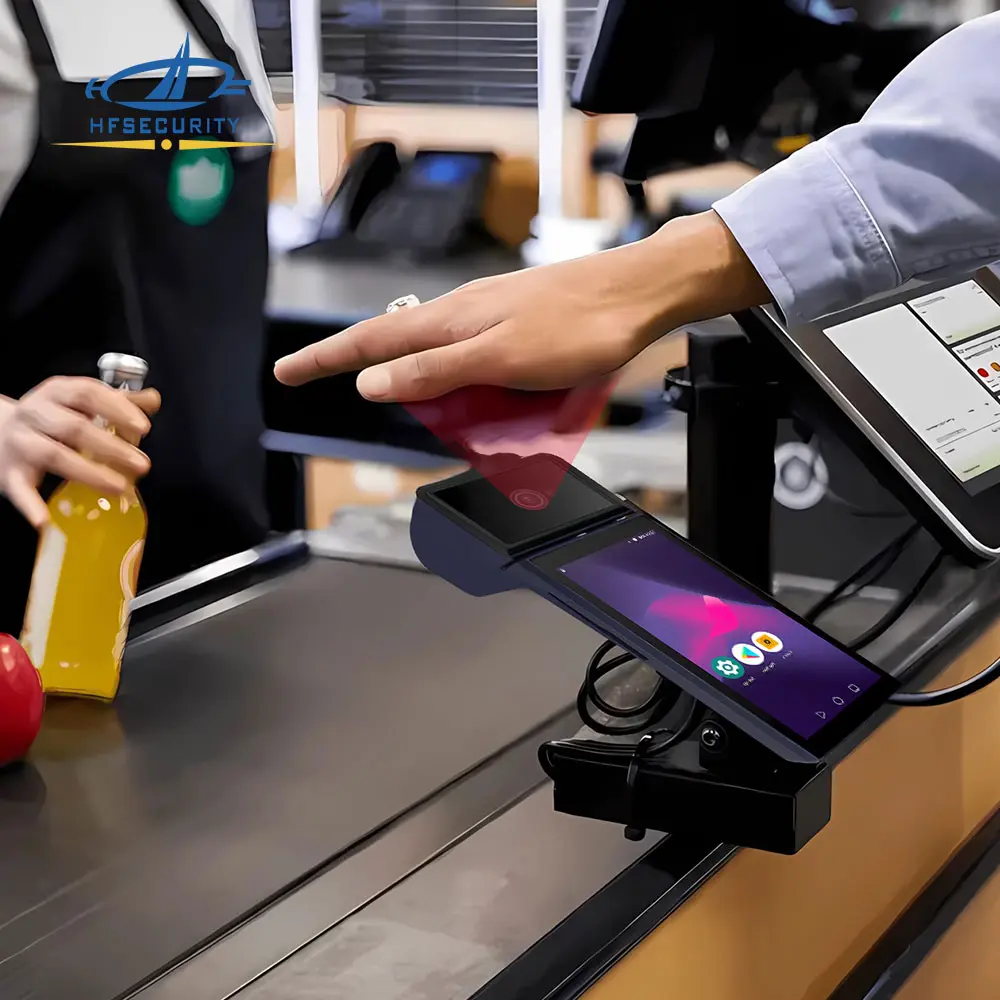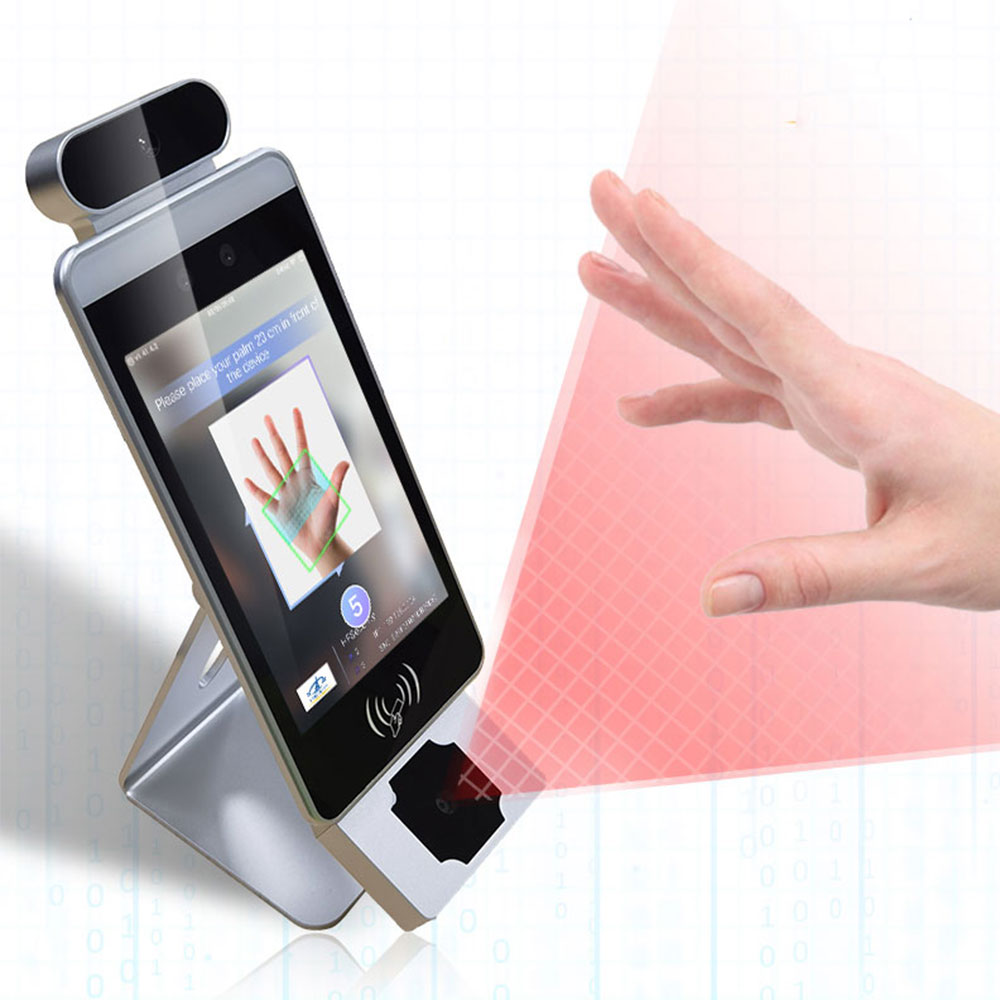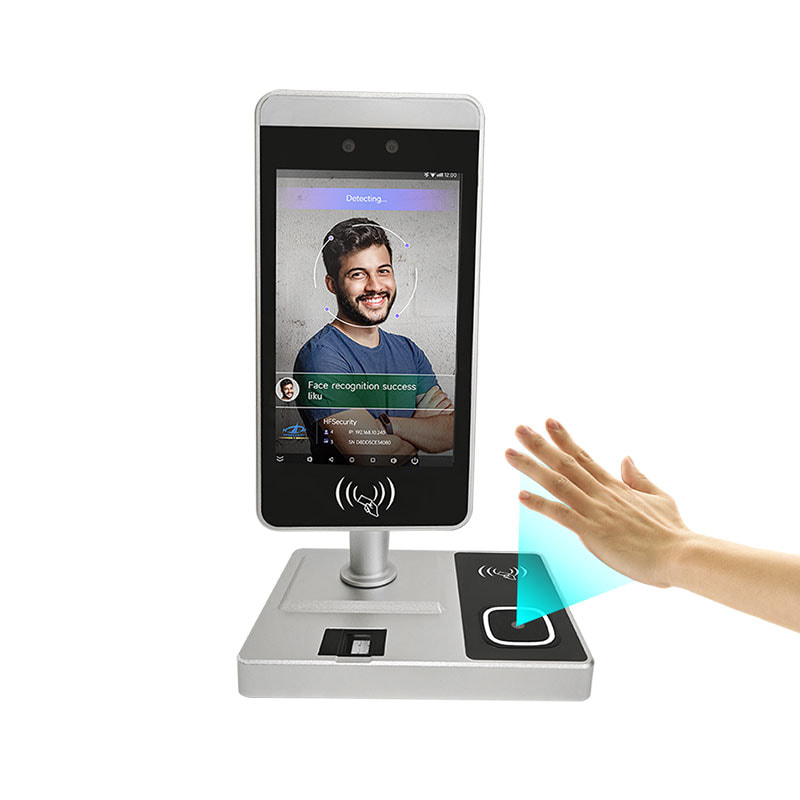Benefits of Palm Vein Scanning Technology
High Accuracy and Uniqueness
Palm vein scanning technology is known for its exceptional accuracy and uniqueness. The vein patterns beneath the skin are highly complex and impossible to duplicate, even in identical twins. Compared to fingerprint recognition or facial recognition, palm vein scanners provide a lower false acceptance rate (FAR) and false rejection rate (FRR), making them one of the most reliable biometric authentication methods.
Strong Anti-Forgery Capabilities
Unlike fingerprint scanners that can sometimes be fooled by molds or lifted prints, palm vein recognition relies on detecting the hemoglobin in blood vessels. This means the technology verifies not only the unique vein structure but also requires live blood flow, offering robust anti-spoofing protection. For industries that handle sensitive data or financial transactions, this makes palm vein scanners a highly secure solution.
Contactless and Hygienic Authentication
Modern contactless biometric systems prioritize hygiene and user convenience. Palm vein scanners allow users to simply hover their hand above the sensor without touching the device. This reduces the spread of germs and improves efficiency, making it especially valuable in hospitals, public offices, and high-traffic areas where multiple people need to authenticate daily.
Enhanced Security for Sensitive Applications
Palm vein scanning has been widely implemented in banking, healthcare, government, and border control because of its high-security authentication. It ensures reliable identity verification for secure logins, financial transactions, and physical access control. Organizations dealing with confidential information prefer palm vein biometrics due to its accuracy, speed, and resistance to fraud.
Long-Term Stability and Reliability
One of the biggest advantages of palm vein recognition technology is its long-term stability. Unlike facial recognition, which may be affected by age, facial hair, or cosmetic changes, vein patterns remain consistent throughout a person’s lifetime. This ensures reliable authentication for years without requiring frequent system updates or re-enrollment.
Seamless Integration with Biometric Systems
Palm vein scanners can be easily integrated with existing biometric authentication platforms, including time attendance systems, access control devices, and identity management software. Their compatibility with multi-modal biometric systems (such as fingerprint or facial recognition) makes them a flexible and future-proof solution for businesses aiming to strengthen security while enhancing user experience.
Drawbacks of Palm Vein Scanning Technology
1. Higher Cost of Implementation
Compared to fingerprint scanners or facial recognition devices, palm vein scanners are more expensive to purchase and maintain. This can be a barrier for small and medium-sized businesses.
2. Limited Availability and Integration
Although growing in popularity, palm vein technology is not yet as widely available as other biometric solutions. Integration with existing access control systems and software may require additional customization.
3. Slower Adoption Rate
While highly secure, palm vein scanners are less common in consumer devices compared to fingerprint or face scanners. This slower adoption may limit widespread use in day-to-day applications.
4. Dependence on Infrared Imaging
Palm vein scanners rely on infrared light to capture vein patterns. In rare cases, environmental factors or poor circulation in a user’s hand may affect the accuracy of the scan.
5. Privacy Concerns
As with all biometric data, palm vein information raises questions about data protection and compliance with regulations such as GDPR. Organizations must ensure strong encryption and secure storage to prevent misuse.
결론
그만큼 benefits of palm vein scanning technology—such as high accuracy, strong security, and contactless usability—make it an excellent choice for industries that require reliable biometric authentication. However, drawbacks like cost, slower adoption, and integration challenges cannot be ignored. For businesses evaluating biometric solutions, the decision should balance security needs with budget, user convenience, and compliance requirements.
As the demand for biometric security continues to rise, palm vein scanners are likely to play a growing role in shaping the future of authentication.
자주하는 질문
ㅏ Palm Vein Scanner is a biometric device that uses near-infrared light to capture unique vein patterns inside a person’s palm. These patterns are then matched against stored templates for secure authentication.
Palm vein scanning technology is highly accurate, with a false acceptance rate (FAR) as low as 0.00008%. Since vein patterns are hidden beneath the skin and require blood flow, they are almost impossible to duplicate.
They are commonly used in banking, healthcare, government, education, and access control systems. For example, hospitals use palm vein scanners to protect patient records, while banks use them for secure transactions.
Yes, palm vein scanners are safe because they use non-invasive near-infrared light, which poses no health risks. The process is completely contactless, making it hygienic and user-friendly.
The main drawbacks include higher costs compared to fingerprint or face recognition, limited integration with existing systems, and slower adoption in consumer devices.
Palm vein scanning is not meant to replace other biometric methods but rather to complement them. Many organizations use it as part of a multi-factor authentication system for maximum security.
문의하기
We would love to speak with you.
Feel free to reach out using the below details.






